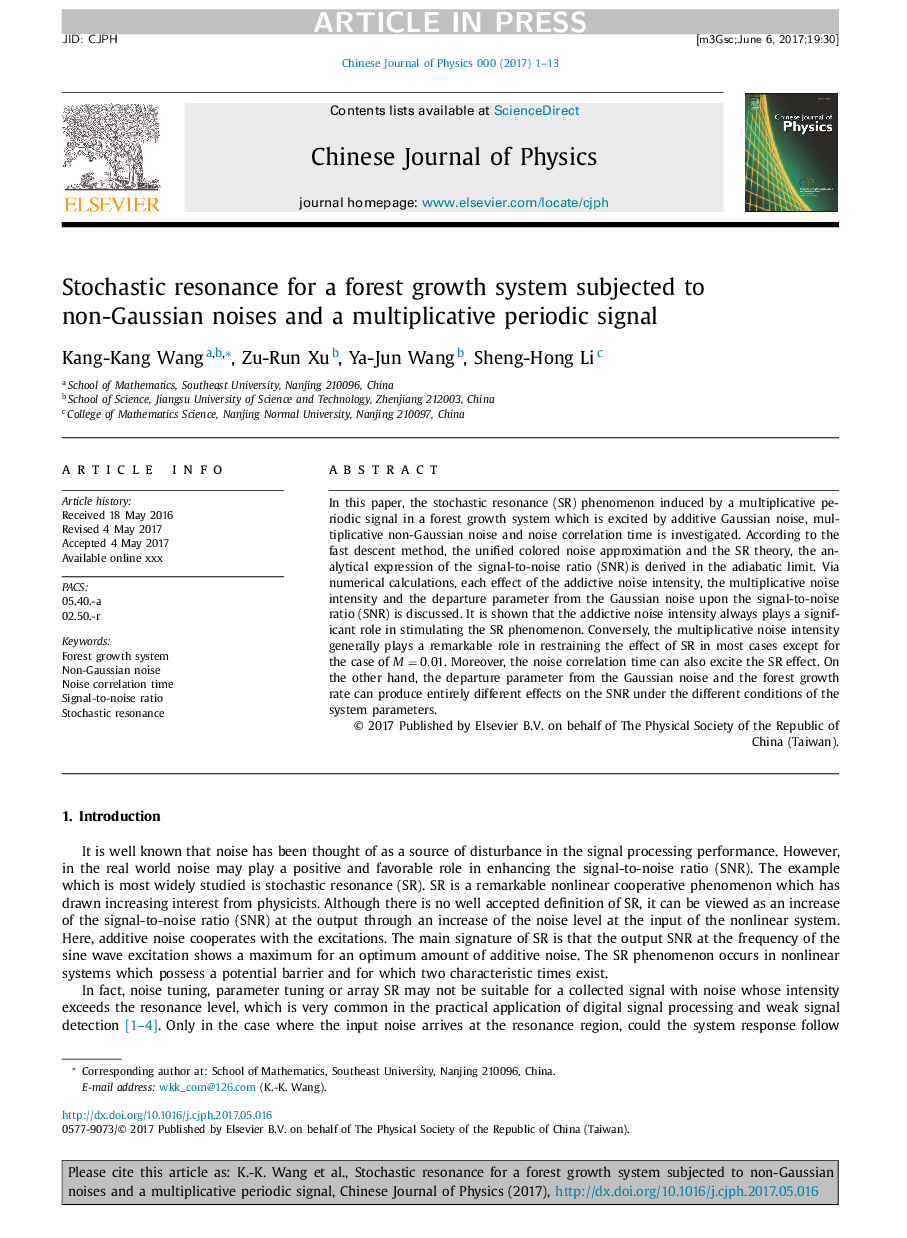| Article ID | Journal | Published Year | Pages | File Type |
|---|---|---|---|---|
| 5488311 | Chinese Journal of Physics | 2017 | 13 Pages |
Abstract
In this paper, the stochastic resonance (SR) phenomenon induced by a multiplicative periodic signal in a forest growth system which is excited by additive Gaussian noise, multiplicative non-Gaussian noise and noise correlation time is investigated. According to the fast descent method, the unified colored noise approximation and the SR theory, the analytical expression of the signal-to-noise ratio (SNR)Â is derived in the adiabatic limit. Via numerical calculations, each effect of the addictive noise intensity, the multiplicative noise intensity and the departure parameter from the Gaussian noise upon the signal-to-noise ratio (SNR) is discussed. It is shown that the addictive noise intensity always plays a significant role in stimulating the SR phenomenon. Conversely, the multiplicative noise intensity generally plays a remarkable role in restraining the effect of SR in most cases except for the case of M=0.01. Moreover, the noise correlation time can also excite the SR effect. On the other hand, the departure parameter from the Gaussian noise and the forest growth rate can produce entirely different effects on the SNR under the different conditions of the system parameters.
Related Topics
Physical Sciences and Engineering
Physics and Astronomy
Atomic and Molecular Physics, and Optics
Authors
Wang Kang-Kang, Xu Zu-Run, Wang Ya-Jun, Li Sheng-Hong,
